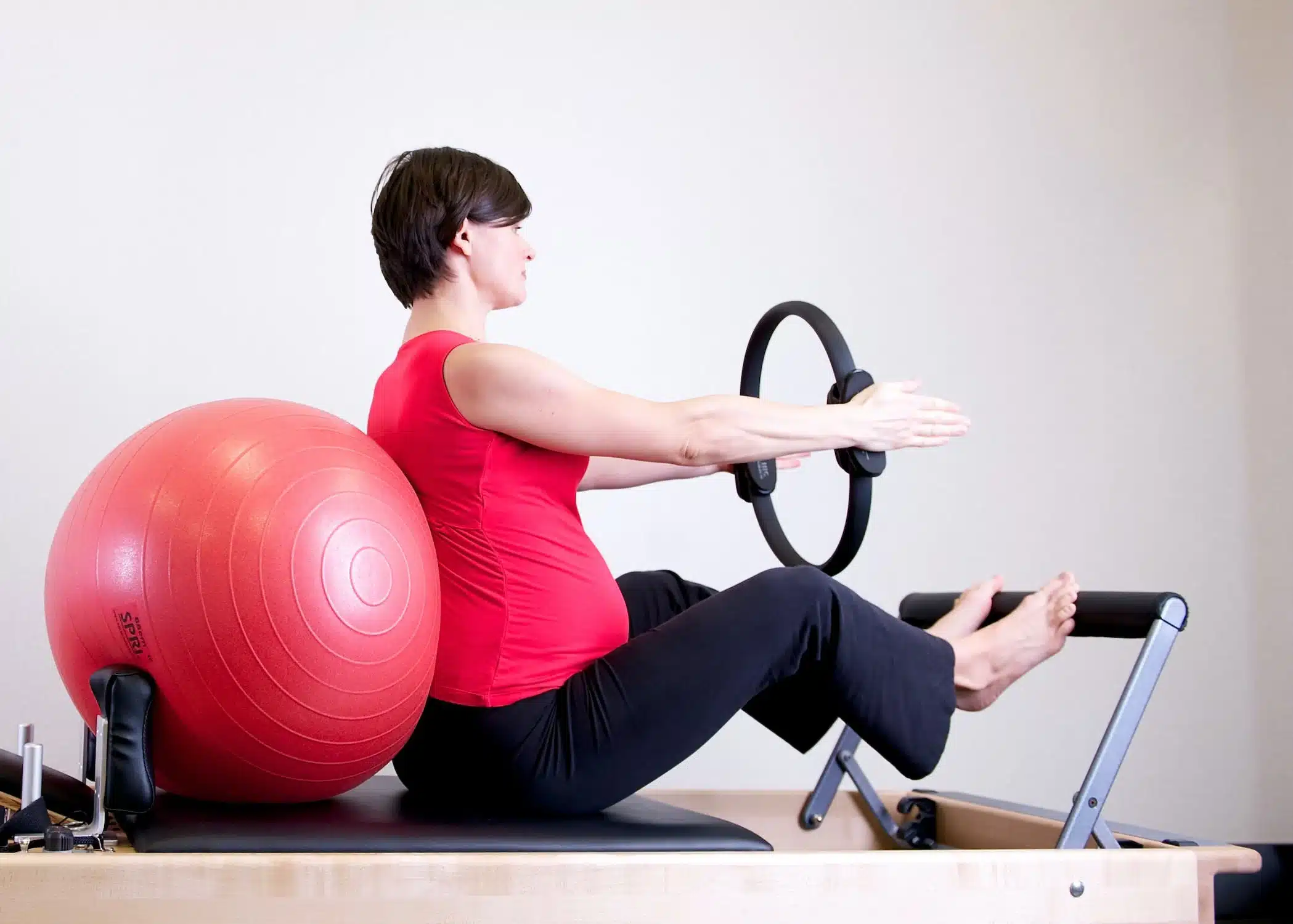Best Weight Loss Exercises for People with Injuries
Embarking on a weight loss journey can be a daunting task, especially for those with injuries. The fear of exacerbating the injury or impeding the healing process often leads to hesitation and frustration. However, with the right approach and guidance, it’s possible to achieve weight loss goals while accommodating and even working around injuries.
In this blog, we will explore a variety of engaging and effective Weight Loss Exercises for People with Injuries. So let’s dive in and discover how you can reach your fitness goals safely and efficiently.

Prioritize Consultation and Professional Guidance
Before starting any exercise regimen, it is crucial to consult with a healthcare professional or a certified trainer who specializes in injury rehabilitation and exercise prescription. They will assess your injury, understand its limitations, and provide appropriate guidance. Their expertise will help you design a personalized workout plan that suits your injury, taking into consideration your weight loss goals.
Low-Impact Cardiovascular Exercises
Cardio exercises are excellent for weight loss as they burn calories and improve overall fitness. For people with injuries, low-impact cardio exercises are recommended to minimize stress on the injured area. Some effective low-impact cardio exercises include:
Single-Leg Exercises
Single-leg exercises require greater stability and balance than exercises performed with both feet on the ground. By focusing on one leg at a time, you engage smaller stabilizing muscles, challenging your balance and proprioception. Many individuals have muscle imbalances, where one side of the body is stronger or more dominant than the other. Single-leg exercises help identify and correct these imbalances by focusing on each leg independently.
Single-leg exercises engage your core muscles, as they require additional stability and balance. Your core muscles, including the abdominal muscles, back muscles, and hip stabilizers, work together to maintain proper alignment and support during single-leg movements. Strengthening your core through these exercises can improve posture, stability, and overall functional fitness.

Elliptical Training, Weight Loss Exercises for People with Injuries.
One of the primary benefits of elliptical training is its low-impact nature, which reduces stress on your joints compared to high-impact exercises such as running or jumping. The elliptical machine’s smooth, gliding motion mimics the natural movement of walking or running without the jarring impact on your joints. It allows you to adjust the resistance and intensity of your workout, enabling you to tailor your exercise routine to your fitness level and weight loss goals.
On average, a 30-minute elliptical session can burn approximately 270 to 400 calories, depending on factors such as your weight, intensity, and duration of the workout. By engaging both the upper and lower body simultaneously, elliptical training promotes muscle development and strength throughout your body, contributing to overall toning and improved body composition. Regular elliptical workouts can lead to increased lung capacity, improved heart health, and enhanced overall aerobic fitness.
Swimming, Weight Loss Exercises for People with Injuries
Water provides natural buoyancy, supporting your body and significantly reducing the impact on your joints compared to exercises performed on land. This makes swimming an ideal choice for individuals with injuries, arthritis, or conditions that limit weight-bearing activities. It targets major muscle groups such as the arms, shoulders, chest, back, core, and legs. As you move through the water, resistance is provided, challenging your muscles and helping to build strength and endurance.
On average, swimming can burn anywhere from 400 to 700 calories per hour, depending on factors such as your weight, swimming speed, and stroke efficiency. Swimming is a fantastic way to improve cardiovascular fitness. It elevates your heart rate, increasing blood circulation and oxygen delivery throughout your body. Regular swimming sessions can improve lung capacity, strengthen the heart muscle, and enhance overall cardiovascular health.
Cycling, Another Best Weight Loss Exercises for People with Injuries
Cycling is a low-impact exercise that minimizes stress on the joints, making it an ideal choice for individuals with injuries or conditions that restrict weight-bearing activities. It is a highly effective calorie-burning activity that can contribute significantly to weight loss. Regular cycling can greatly enhance your cardiovascular fitness.
When you engage in cycling, your heart rate increases, boosting blood circulation and oxygen delivery throughout your body. The repetitive pedaling motion serves as an effective resistance exercise, gradually building strength and tone in these muscle groups. As you increase the resistance on your bike or tackle more demanding terrains, you’ll further challenge and develop your leg muscles.
Outdoor cycling allows you to explore scenic routes, enjoy fresh air, and vary your terrain, while indoor cycling provides a controlled environment with options for adjusting resistance and intensity. The versatility of cycling ensures that you can maintain consistency in your workouts regardless of weather conditions or time constraints.
Strength Training with Modifications
Strength training is essential for weight loss as it helps build lean muscle, increase metabolism, and improve overall body composition. While injuries may limit certain movements, modifications can be made to accommodate and work around them. Here are some suggestions for strength training exercises:
Resistance Band Exercises
Resistance bands provide a low-impact workout that minimizes stress on the joints. The elasticity of the bands allows for smooth and controlled movements, making them ideal for individuals with joint issues or injuries. Additionally, resistance bands engage multiple muscle groups simultaneously, providing a full-body workout.
They can be used to target the upper body, lower body, and core muscles, making them versatile and efficient for total body strength training. Resistance bands are lightweight, compact, and easily portable, making them a convenient exercise tool that can be used anywhere, whether at home, the gym, or while traveling. Their versatility allows you to perform a wide range of exercises without the need for bulky equipment or heavy weights.
Isometric Exercises
Isometric exercises are gentle on the joints as they do not involve repetitive movement or joint impact. This makes them suitable for individuals with joint pain, arthritis, or injuries, allowing them to strengthen their muscles and promote healing without exacerbating their conditions. Isometric exercises are excellent for isolating specific muscle groups and activating them to a high degree.
By holding a static position, you can focus on engaging and contracting specific muscles, leading to increased muscle fiber recruitment. Regular practice of isometric exercises can improve muscle endurance and stability, leading to enhanced functional strength in daily activities and other exercises. Isometric exercises require minimal equipment and space, and many exercises can be performed in a short amount of time. This allows you to incorporate isometric exercises into your routine without requiring extended periods of dedicated exercise time.
Core Strengthening and Stability: A strong core helps maintain proper alignment and posture by providing support to your spine and pelvis. Strong core is essential for optimal performance in various sports and physical activities. It serves as a stable base for generating power, improving balance, and facilitating efficient movement patterns.
Whether you’re running, jumping, lifting weights, or participating in sports, a strong and stable core contributes to improved performance and reduced risk of injuries. Strengthening your core improves your ability to perform these tasks with ease and reduces the risk of strain or injury during daily activities.
Here are some examples:
Pelvic Tilts: Lie on your back with knees bent and gently tilt your pelvis up and down to engage the core muscles.
Bridge Exercises: Lie on your back with knees bent, raise your hips, and hold the position to engage the glutes and core muscles.
Planks: Modified planks, performed on forearms or with knees on the ground, can effectively engage the core muscles without aggravating injuries.
Flexibility and Stretching: Flexibility plays a crucial role in injury prevention by reducing the risk of muscle strains, tears, and joint injuries. When your muscles and connective tissues are more flexible, they are better able to handle the stresses placed on them during physical activity. Stretching helps alleviate muscle tension, remove metabolic waste products, and promote the delivery of oxygen and nutrients to the muscles, aiding in their repair and recovery.
Improved flexibility allows for greater joint mobility and range of motion in your muscles and joints. This increased range of motion can enhance your athletic performance, as it allows you to move more freely and efficiently during physical activities and exercise. Whether you’re running, lifting weights, or participating in sports, greater flexibility can optimize your movement patterns and contribute to improved overall performance.

Some effective stretching techniques include:
Static Stretching
Hold stretches for 15-30 seconds to lengthen and relax muscles.
Dynamic Stretching
Perform controlled movements that mimic exercises, gradually increasing the range of motion.
Yoga and Pilates
These practices combine stretching, core strengthening, and relaxation techniques, providing a holistic approach to fitness and injury recovery.
Additionally, here are a few more types of stretching that you can explore:
PNF Stretching (Proprioceptive Neuromuscular Facilitation):
PNF stretching involves a combination of contracting and relaxing muscles to enhance flexibility. It is typically done with a partner and is highly effective for improving range of motion. One common PNF technique is the “hold-relax” method, where the muscle is stretched, then contracted isometrically, and then relaxed further into the stretch.
Active Isolated Stretching (AIS)
AIS involves holding a stretch for only a few seconds and then releasing it. The focus is on isolating specific muscles or muscle groups and actively engaging the antagonist muscles to allow for a deeper stretch. This method is gentle and effective for improving flexibility without causing excessive muscle soreness.
Ballistic Stretching
Ballistic stretching involves using momentum and bouncing movements to stretch muscles beyond their normal range of motion. While it can improve flexibility, it carries a higher risk of injury and is generally not recommended, especially for individuals with injuries or limited flexibility. It is important to approach stretching with controlled and gentle movements rather than forceful bouncing.
Fascial Stretch Therapy (FST)
FST is a type of assisted stretching that targets the body’s fascia, a connective tissue that surrounds muscles, bones, and joints. This technique involves a series of stretching and traction movements performed by a trained therapist. FST helps release tension in the fascia, improves flexibility, and enhances overall mobility.
Listen to Your Body and Rest
One of the most critical aspects of exercising with injuries is listening to your body. Pay attention to any discomfort, pain, or unusual sensations during and after workouts. Modify exercises or seek professional advice if needed. Adequate rest and recovery are also essential for healing and progress, so incorporate rest days into your routine and allow your body to recuperate.
Embarking on a weight loss journey with an injury doesn’t have to be an insurmountable challenge. By prioritizing professional guidance, opting for low-impact exercises, modifying strength training, focusing on core stability, incorporating stretching, and listening to your body, you can achieve weight loss goals while safeguarding your injury. Remember, consistency and patience are key. Embrace the journey, stay positive, and celebrate your progress, no matter how small. Stay Strong! You’ve got this!


